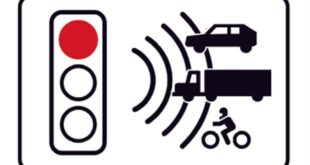A familiar sight on Spanish roads—traffic lights are about to get a major update as a fourth, white signal is set to join the classic red, amber, and green.
Credit: Pexels
We don’t really pay much attention to traffic signals. We stop and go, occasionally muttering at the amber light, then we continue our day. This summer, Spanish motorists may do a double take at the crossroads. A brand new white signal is set to join the classic amber, red and green.
This is not some kind of art project, but rather a major step in the future of driving.
What’s the deal with that white light? The new technology changing the way you drive
All thanks to the rise in self-driving vehicles. The clever vehicles, which look like something out of a sci-fi blockbuster, are getting ever closer to becoming a regular part of life in Spain. Our old traffic signals aren’t designed for cars that communicate with each other through computers.
Enter the white-light. This technology, which is currently being trialled at North Carolina State University by some clever people in the US but will soon be available here, is on its way. The idea is that when a group of self-driving vehicles approach a traffic junction together, the system detects them and turns on the white light.
This is not a signal to go to a disco. It’s actually the cue for all drivers—whether you’re behind the wheel or your car’s doing the hard work—to simply follow the vehicle in front. You move if it moves. If it stops moving, you stop. So simple. It might be a relief to those of us that have hesitated when crossing a busy street.
From red, amber and green to… white? Don’t panic – Here’s how it’ll work
What’s really changing? You’re wrong. Red still means stop. Green is still the same as go. Amber is a signal to slow down. White light is an additional layer of protection that comes on when the self-driving car is in control.
Imagine you are crawling along in city traffic. You see the usual line at the lights but this time there is a steady, white glow over the intersection. This is your signal that smart cars have taken over. You just need to keep a reasonable distance from the robots and let them do their job.
Don’t worry if you drive the old-fashioned manner. Watch the car ahead. It’s not about making things more confusing—if anything, the aim is to make those stressful city crossings a bit less of a headache. There will be less stop-starting, less honking and less “who’s next?” At the crossroads.
Will it make our lives easier? Will it make life easier?
Of course, there are still some who remain skeptical. Some motorists are a bit wary of new tech on the road—and who can blame them? Traffic experts claim that it will make driving in busy cities easier and reduce the number of unnecessary stops.
Don’t worry – the rules apply to buses, motorbikes and lorries. Nobody gets a free ride. The white light isn’t an excuse for reckless driving – it’s just a new signal for a new era.
Don’t panic the next time you see something different at a traffic light. It’s part of a plan that aims to mix human drivers and automated vehicles without turning every intersection in a circus.
Who knows, in a few short years we may all wonder how we managed to get along without the little white light.
 Costa News Spain Breaking News | English News in Spain.
Costa News Spain Breaking News | English News in Spain.





